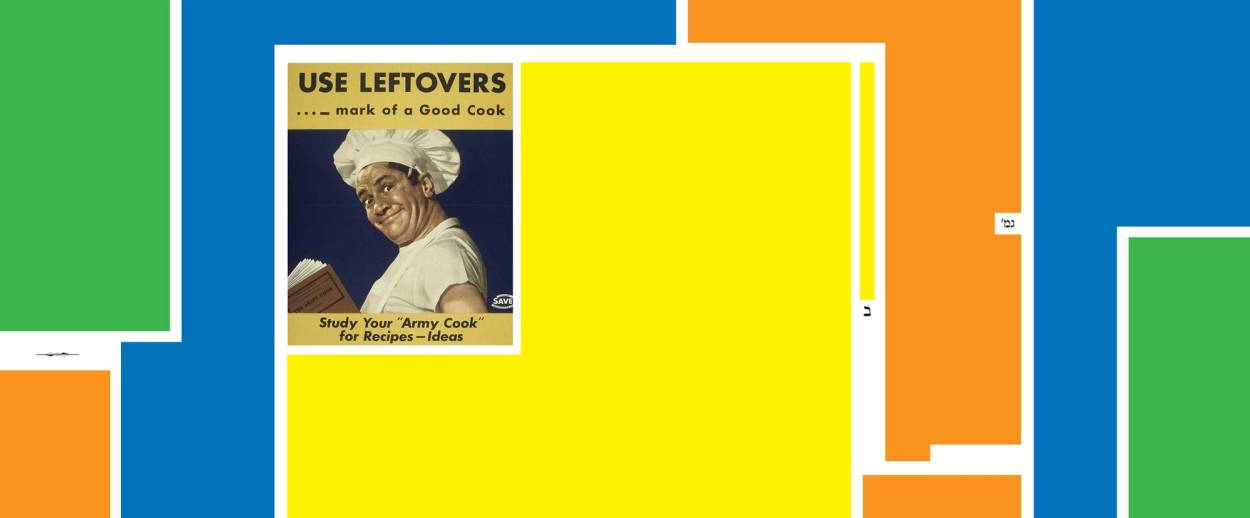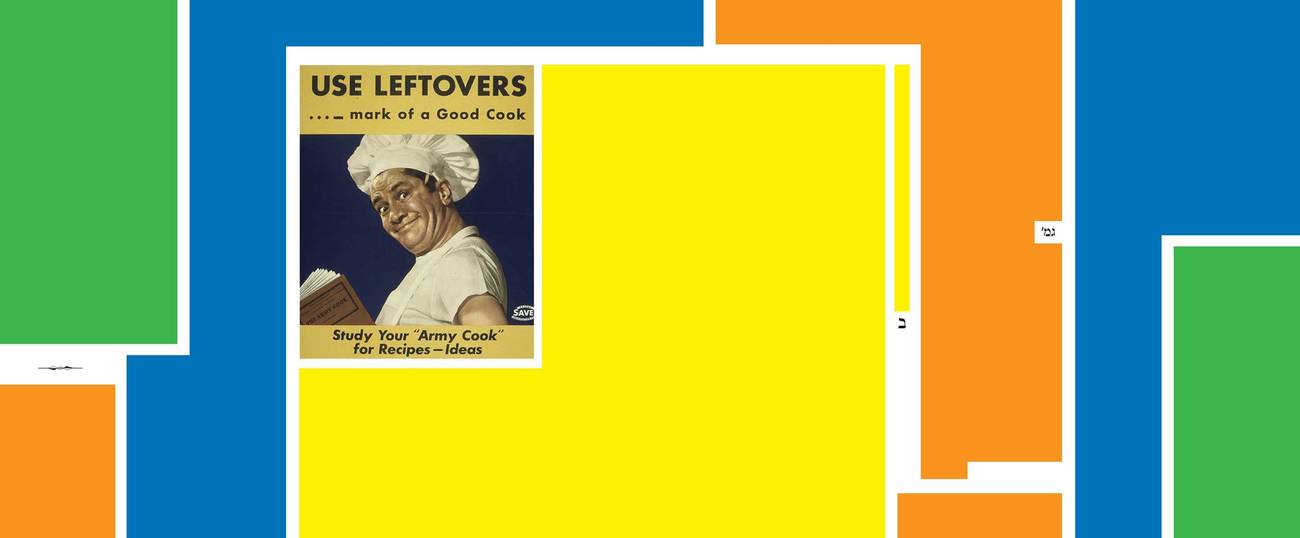Ends With Benefits
This week’s ‘Daf Yomi’ Talmud study debates the right way to use consecrated Temple leftovers without crossing holy lines




Literary critic Adam Kirsch is reading a page of Talmud a day, along with Jews around the world.
In the first chapters of Tractate Me’ila, whose subject is the misuse of consecrated items, the focus was on one kind of sacred item in particular: sacrificial animals, which belong to God and so can’t be eaten, worked or shorn for the benefit of humans. As we saw, however, this prohibition lasts only up to the point when the blood of the animal is sprinkled on the altar; after that, its flesh can be eaten by the priests, which means that it is no longer subject to me’ila. The general principle was stated in last week’s reading, in Me’ila 11a: “Anything whose mitzva has been performed” is no longer “subject to misuse.” For instance, consecrated wine can’t be drunk or sold until it has been poured on the altar as a libation. But once it has been poured and it flows into the drainpipes that carry it away from the altar, it is no longer subject to me’ila.
Yet no sooner has this principle been stated than the rabbis begin to cite exceptions to it. According to Rabbi Elazar bar Rabbi Tzadok, for instance, it’s not true that the wine poured on the altar was treated as nonsacred after it went into the drainpipes. In fact, he explains, dregs of the wine would accumulate in the pipes, and “every seventy years” priests would clean them out, extracting “congealed wine … which resembled dried cakes of pressed figs.” To dispose of them, “they would burn them in sanctity,” as if they were an offering.
This seems to prove that wine remains consecrated even after it is used in its mitzva, and so it would remain subject to me’ila—in contradiction of the rabbis’ statement in the mishna. In order to overcome this objection, the rabbis make a distinction: The decision to burn the dregs was made according to rabbinic law, not Torah law. As we’ve seen throughout the Talmud, the rabbis will often impose an extra stringency on top of a Torah commandment, in order to “build a fence around the law”—that is, to discourage accidental sin or even the appearance of sin. Perhaps in this case they felt that, were the wine dregs to be eaten or sold, people would think the same thing could be done with consecrated wine itself.
But that’s not the only exception to the rule. There are a variety of sacred items used or produced in the Temple, and the rabbis disagree about whether and when they are subject to me’ila. Wood and flesh that are burned on the altar, for instance, produce ash: Can that ash be used or sold as fertilizer, or would this constitute a misuse of Temple property? It would seem that me’ila shouldn’t apply here, because the mitzva of burning has already been performed. But in fact, this is not the case: The ashes from the altar must be buried because they are still sacred. Likewise, the white linen garments worn by the High Priest on Yom Kippur cannot be reused, because they retain their sanctity even after their mitzva is completed.
Other examples raise different kinds of problems. What if a consecrated ewe gives birth to a lamb: Is she allowed to nurse it? Or is the milk in her body also consecrated, so that feeding it to a lamb would constitute me’ila? The mishna on Me’Ila 13a says that nursing is forbidden, but adds that “there are others who stipulate in this matter” that it is allowed. In discussing the question, Rav argues that there’s a distinction to be made between blood, which is definitely subject to me’ila, and milk, which shouldn’t be. An animal “cannot exist without blood,” he argues, so the blood is really a part of the animal’s body; but an animal can exist without producing milk, which suggests that milk is a separate substance, and therefore not subject to misuse.
Rav Mesharshiyya raises another dilemma: What about an animal’s dung, which could be valuable as fertilizer? In a sense, dung is like blood, since “the animal cannot exist without dung”—anything living has to excrete. The rabbis respond that there is a difference, which is that dung “comes to the animal from an external source”—that is, it is a byproduct of the food the animal eats, and so it is never actually part of the animal’s body, merely contained in its digestive canal.
In the case of animal flesh or dung, it’s fairly clear what “deriving benefit” from it would entail: When you eat the meat or spread the fertilizer, you use it up, thus depriving the Temple of a resource that belongs to it. But in Chapter 5, the rabbis analyze other cases of me’ila where the definition of misuse isn’t so clear. Say, for instance, that you drink water out of a gold cup or wear a gold ring that has been consecrated as Temple property. This doesn’t damage the ring or the cup, so the Temple is not being financially harmed in any way. Why, then, should this constitute me’ila?
The mishna in Me’ila 18a explains that the transgression of me’ila has two components: harm to the Temple and benefit to the individual. If either of these exceeds the value of one peruta—the smallest denomination of coin in circulation in Talmudic times—then the person is guilty of me’ila. No sooner has this principle been stated, however, than the Gemara begins to restrict it, by drawing textual comparisons between me’ila and other sins defined in the Torah, such as adultery and idol worship. In this way they come up with a precise formula for when me’ila has been committed: It is only when “the individual both damages and derives benefit from sacred items; and when the one who damaged also derived benefit from it himself; and he derives benefit from the same item that he damages; and his damage and his deriving benefit occur simultaneously.”
Thus the Gemara narrows the scope of the infraction to cases where using a sacred item involves using it up in some way. But depreciation of an asset’s value can be construed broadly, the rabbis go on to show. For instance, one might think that if a woman puts on a sacred gold necklace, she is not committing me’ila, since while she benefits, the necklace isn’t damaged. But Rav Zevid disagrees: Gold isn’t used up immediately, like burning wood or eating meat, but over a long period of time it does sustain wear and damage. Clearly, the definition of me’ila is open to argument in many particular cases—which makes it a perfect subject for Talmudic analysis.
***
Adam Kirsch embarked on the Daf Yomi cycle of daily Talmud study in August 2012. To catch up on the complete archive, click here.
Adam Kirsch is a poet and literary critic, whose books include The People and the Books: 18 Classics of Jewish Literature.